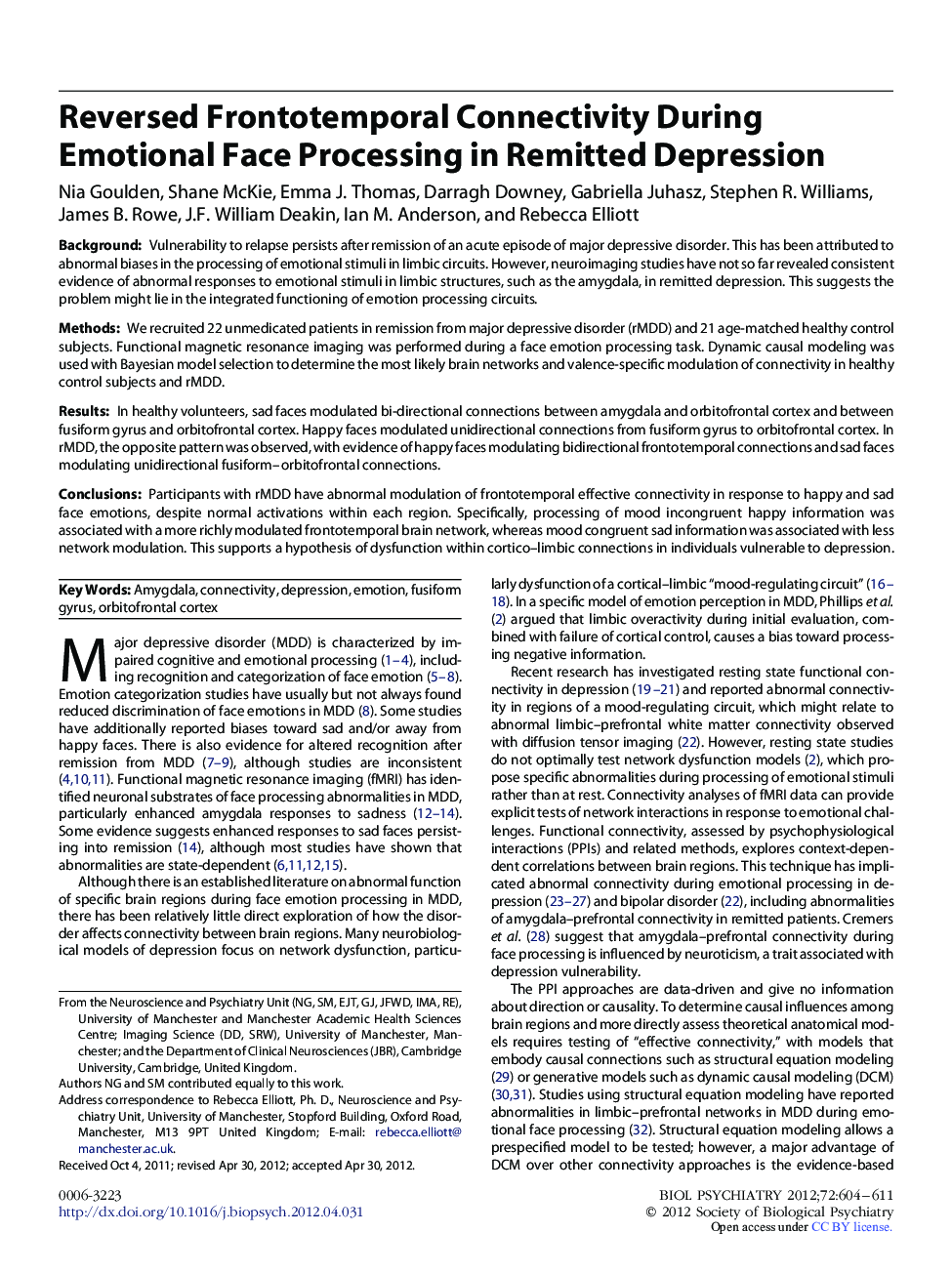| کد مقاله | کد نشریه | سال انتشار | مقاله انگلیسی | نسخه تمام متن |
|---|---|---|---|---|
| 6227540 | 1276457 | 2012 | 8 صفحه PDF | دانلود رایگان |

BackgroundVulnerability to relapse persists after remission of an acute episode of major depressive disorder. This has been attributed to abnormal biases in the processing of emotional stimuli in limbic circuits. However, neuroimaging studies have not so far revealed consistent evidence of abnormal responses to emotional stimuli in limbic structures, such as the amygdala, in remitted depression. This suggests the problem might lie in the integrated functioning of emotion processing circuits.MethodsWe recruited 22 unmedicated patients in remission from major depressive disorder (rMDD) and 21 age-matched healthy control subjects. Functional magnetic resonance imaging was performed during a face emotion processing task. Dynamic causal modeling was used with Bayesian model selection to determine the most likely brain networks and valence-specific modulation of connectivity in healthy control subjects and rMDD.ResultsIn healthy volunteers, sad faces modulated bi-directional connections between amygdala and orbitofrontal cortex and between fusiform gyrus and orbitofrontal cortex. Happy faces modulated unidirectional connections from fusiform gyrus to orbitofrontal cortex. In rMDD, the opposite pattern was observed, with evidence of happy faces modulating bidirectional frontotemporal connections and sad faces modulating unidirectional fusiform-orbitofrontal connections.ConclusionsParticipants with rMDD have abnormal modulation of frontotemporal effective connectivity in response to happy and sad face emotions, despite normal activations within each region. Specifically, processing of mood incongruent happy information was associated with a more richly modulated frontotemporal brain network, whereas mood congruent sad information was associated with less network modulation. This supports a hypothesis of dysfunction within cortico-limbic connections in individuals vulnerable to depression.
Journal: Biological Psychiatry - Volume 72, Issue 7, 1 October 2012, Pages 604-611